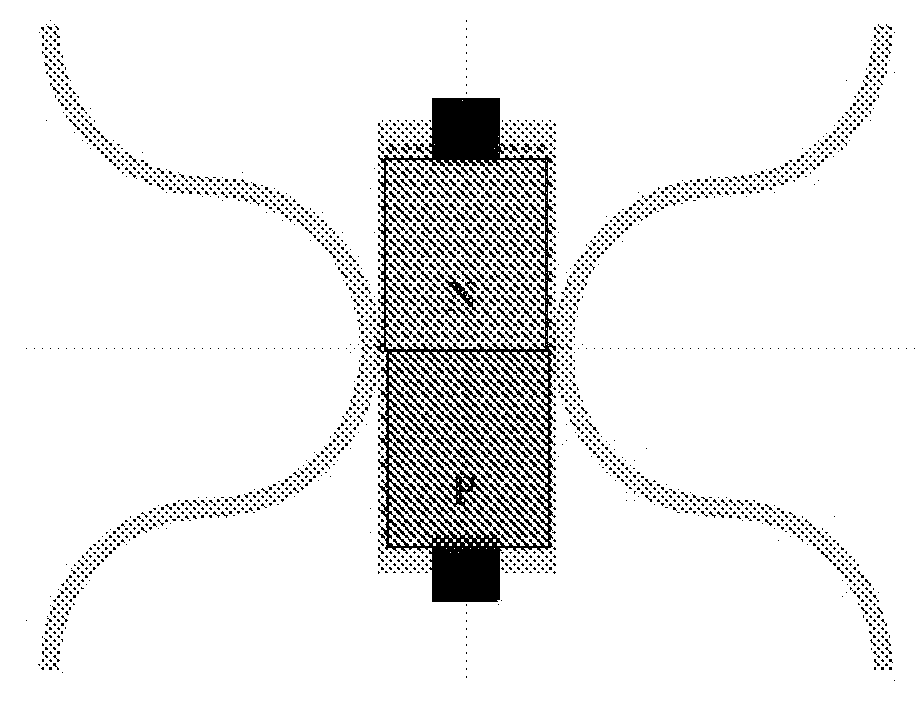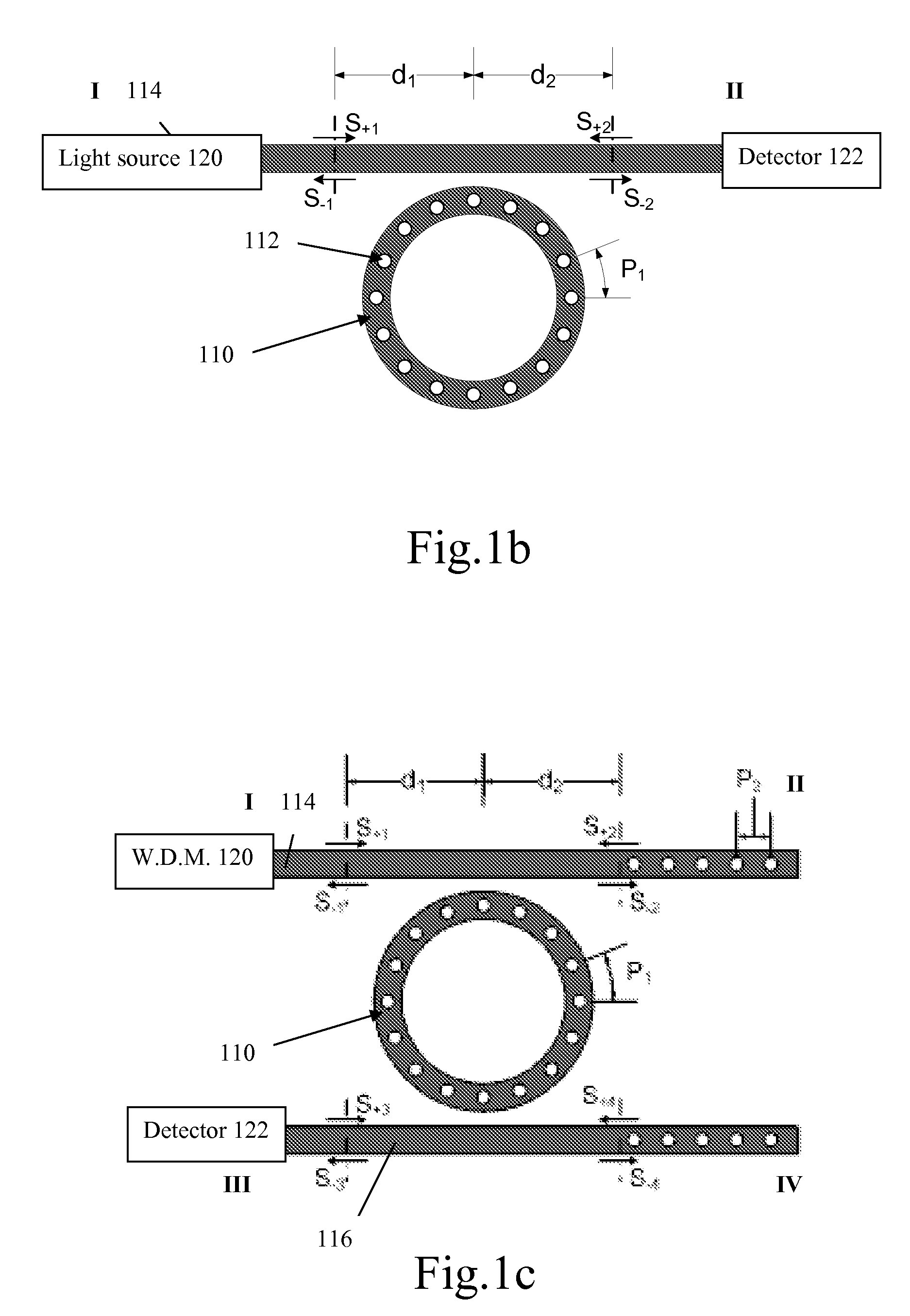Electro-Optical Modulator Structure
a technology of optical modulator and structure, applied in the field of electro-optical modulator structure, can solve the problems of difficult to predict the charge distribution, difficult to perform analytical calculations on the concentration of free carriers that are injected to a soi-based device, etc., and achieve the effects of improving the performance of electro-optical modulators, reducing fabrication costs, and reducing siz
- Summary
- Abstract
- Description
- Claims
- Application Information
AI Technical Summary
Benefits of technology
Problems solved by technology
Method used
Image
Examples
Embodiment Construction
[0067]The present invention provides a novel high performance EO modulator for modulating incoming light having a certain wavelength range i.e. a wavelength of operation. Reference is made to FIG. 1a, generally illustrating a cross-sectional view of the layer structure forming the modulator of the present invention. To facilitate understanding, the same reference numbers are used for identifying components that are common in all the examples.
[0068]In this non-limiting example, the EO modulator structure 100 can be fabricated on a SOI wafer with the following characteristics: 230 nm thick resonator (c-Si) layer 102, 3 μm thick buffer (SiO2) layer 103 and a ˜500 μm thick handle (c-Si) layer 105. The top silicon layer 102 deposited on the SiO2 103 is recovered by another SiO2 buffer layer 104, which constitutes the cladding of a ridge waveguide (450 nm wide) that guides light in and out of the SOI chip. The resonator is located on the modulator layer inside the ridge waveguide. On top ...
PUM
 Login to View More
Login to View More Abstract
Description
Claims
Application Information
 Login to View More
Login to View More - R&D
- Intellectual Property
- Life Sciences
- Materials
- Tech Scout
- Unparalleled Data Quality
- Higher Quality Content
- 60% Fewer Hallucinations
Browse by: Latest US Patents, China's latest patents, Technical Efficacy Thesaurus, Application Domain, Technology Topic, Popular Technical Reports.
© 2025 PatSnap. All rights reserved.Legal|Privacy policy|Modern Slavery Act Transparency Statement|Sitemap|About US| Contact US: help@patsnap.com



